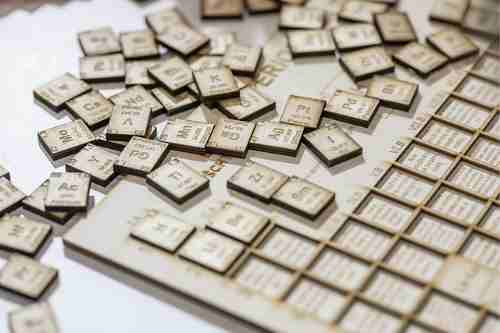Written by Adeel Abbas
Importance of Periodic table
Table of Contents
When we look at the chemistry of the chemical sciences we see that more significant achievements are in the development of the periodic table of the elements that can help us to system systematize the properties of the element. It shows the importance of the periodic table as it provides a highly organized list of chemical elements.
Watch the video lecture to better understand History and development of the periodic table
information from the periodic table
The periodic table gives us a basic framework to understand the chemistry of the elements it also gives us information on the periodic properties of the compounds. moreover, the periodicity is well understood from the periodic table
History of the Periodic table

The following scientists have done a major contribution towards the development of the model of the periodic table.
- Al Razi
- Dobereiner
- Newland
- Mendeleev
- Moseley
Al-Razi
He classified the elements on the basis of the physical and chemical properties of the substances.
Dobereiner
He was a German chemist who gave his laugh triads in 1829. in this, he stated they are set of three elements. the atomic mass of the middle element is the mean of the other two elements all the elements of the triad system have the same properties
Newlands law of octaves
Newland was an English chemist who gave his law in 1864. He classified 62 elements that were known at that time. He arranged them in increasing order of atomic masses in noticed that every Earth element had the same properties in common with the first one.
Mendeleev periodic table
Watch the video tutorial about Mendeleev’s periodic table
Mendeleev was a Russian chemist. In 1871, He gave a more useful and accurate understandable scheme for the classification of the elements. He discovered a role for the classification of elements which is known as periodic law.
Definition of the periodic law of the Mendeleev
According to Mendeleev’s periodic law, the properties of the elements are the periodic function of their atomic masses.
Salient features of Mendeleev’s periodic law
- The vertical columns were name groups
- The horizontal rows in the periodic table were named the periods
- The arrangement was done according to the increasing order of atomic masses
- The elements with similar chemical behavior and properties appeared at regular intervals
- Some gaps were left in this table which had not yet been discovered
- He predicted the properties of the elements which were yet to be discovered
Advantages of Mendeleev’s periodic table
1 Prediction of new elements
Mendeleev left some vacant places for those elements which were yet to be discovered later on when these elements were discovered they were placed in those places
2 Correction of atomic masses
Mendeleev was able to correct the doubtful atomic masses.
For example on the basis of similarities in chemical properties and leave placed beryllium in the second group along with magnesium calcium Strontium and barium. Its atomic mass was thought to be 13.5 a.m.u. It was wrong. its correct atomic mass was proposed to be 9.0 a.m.u.
Defects in Mendeleev’s periodic table
1 Position of hydrogen
The properties of Hydrogen resemble alkali metals and halogen its position could not be decided by the Mendeleev.
2 idea about the structure of the atom
His table did not give an idea about the structure of the atom. Actually, it was formed on the basis of atomic mass
3 Position of lanthanides and actinides
There is a group of 14 elements from an atomic number Ce57–Lu71. They are called Lanthanide these elements do not find a proper place in Mendeleev’s periodic table.
Similarly and another group of F block element from atomic number Th90–Lr103 is called actinide
They also did not find any proper position in the mint leaves the periodic table
4 irregular position of some elements
Following four pair of elements are very interesting their atomic masses have different trend than atomic numbers Mendeleev arranged them in increasing order of atomic masses they should have been arranged in the increasing order of atomic number.

5 Positions of isotopes
Mendeleev periodic table does not give any indication about the position of isotopes
6 Dissimilar elements are placed together
The properties of coinage metal such as copper silver and orange differ from alkali metals but he placed them together
7 Cause of periodicity
No doubt the periodicity of the properties can be justified to some extent but the reason for the periodicity is not clear from his table.
Improvements in the Mendeleev periodic table By Moseley
Moseley periodic law
Moseley was the British physicist who gave his law in 1913. He prepared the periodic table by giving his low which is called Moseley’s law.
Definition of Moseley’s Law
The properties of elements either physical and chemical are the periodic function of their atomic number.
Benefits of Moseley’s law
The Irregularities which were present in Mendeleev periodic table were removed by the mostly
1 Correct arrangement of some elements
By keeping in view the most periodic law..
- Argon should be placed before potassium
- Cobalt should be placed before Nickel
- Te should be placed before Iodine
2 Position of rare Earth
Position of rare are of Lanthanide and actinide were adjusted
3 Position of Isotopes
The isotopes of the same element processes the same atomic number all of them should occupy the same place in the periodic table
4 Placement of noble gases
The extra group of noble gases was developed and the number of groups for them is VIIIA or zero group.
5 The position of coinage metals
The metals like zinc cadmium and mercury and the coinage metal such as copper silver and Au were placed separately from the Be, Mg, Ca, Sr and Ba.
Share this with others